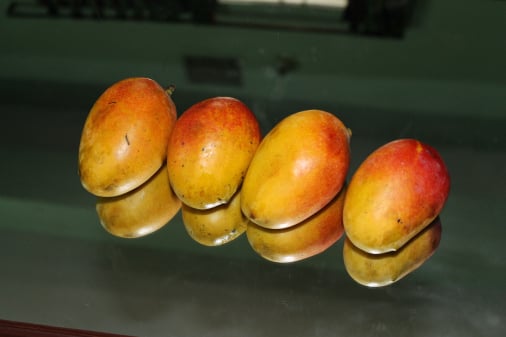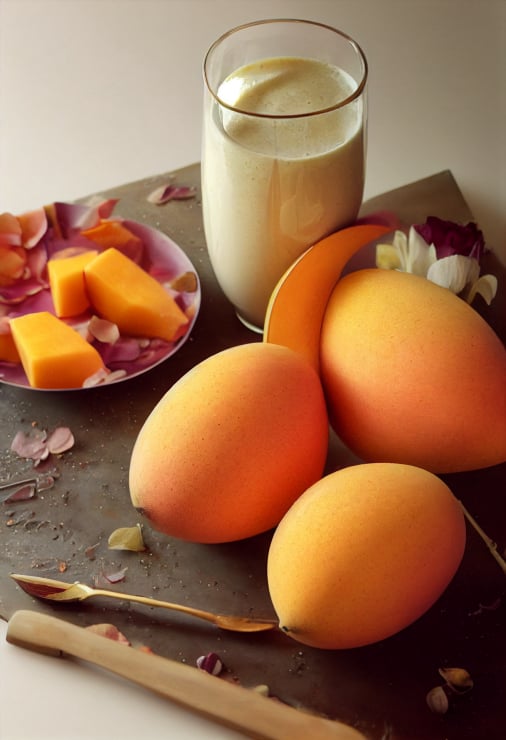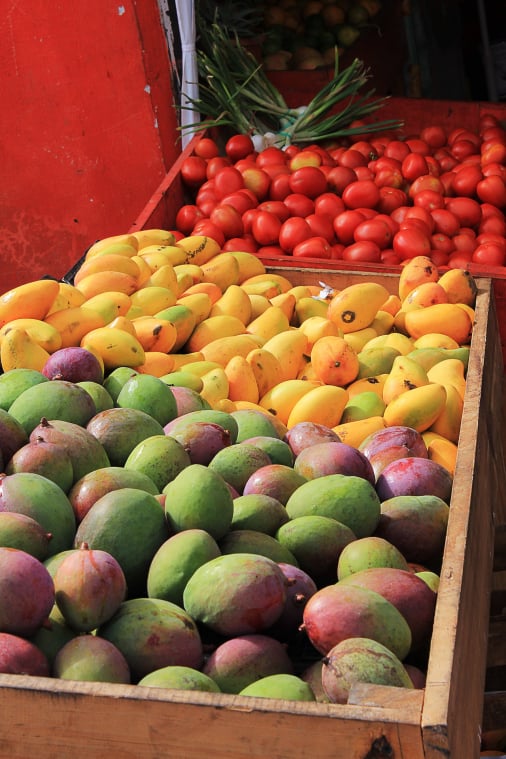Mango traceability app:
Mango traceability app for packing processing quality control solution for packers and processors of mangoes : Complete mango packing business management of traceability, packing, sales, shipping, invoices, export.

Mango Traceability during production & packing
View Traceability App Specifications.
Mango packing processing quality control solution for packers and processors of fresh produce: Complete mango packing business management of traceability, packing, sales, shipping, invoices, export.
-Normally, from plantation field to wholesale market, there are different kinds of package materials such as tissues, plastic colour, plastic, newspaper to pack mango then put all mangoes into bamboo basket or wooden box ( estimated 400 x 500 x 900 mm).
-Appropriate carton and wood packaging materials with issuance of phytosanitary certificate is used for exported plant and plant products.
-Tin / Can packing for Puree mango (430g or 3.1 kg)
-Plastic vacuum packing for dried mango (300-500g)
-Glass bottle for mango jam (250g)
-Plastic vacuum packing for mango leather (300-500g)
-Myanmar National Standard follow ASEAN standard for packaging.
-ASEAN standard is compliance with the Recommended International Code of Practice for Packaging and Transport of Tropical Fresh Fruits and Vegetables (CAC/RCP 44-1995, Amd. 1-2004).
-Long distance transportation through tropical and frigid climates requires rugged well-designed equipment to withstand the transit environment and protect the produce. Desirable features in refrigerated trailers up to 14.6 m (48 ft) long and van containers up to 12 m (40 ft) long include for example:
- 42,000 kJ/h (40,000 BTU/h) refrigeration capacity at 38 C (100 F) ambient, 2 C (36 F) return air temperature
-cleanliness--the load compartment should be regularly cleaned for example by steam cleaning;
- damage to walls, floors, doors, ceilings should be in good condition;
- temperature control--refrigerated units should be recently calibrated and supply continuous air circulation for uniform produce temperatures.
-Loads should be secured with one or more of the following materials to prevent the effects of vibrations and impact damage in transport and handling:
- aluminum or wood load locks;
- paperboard or fibre board honeycomb fillers;
- wood blocking and nailing strips;
- inflatable kraft paper air bags;
- cargo nets and straps;
- wood load gates constructed of 25 mm x 100 mm (1 x 4 in) material.
-Packaging must withstand:
- rough handling during loading and unloading;
- compression from the overhead weight of other containers;
- impact and vibration during transportation;
- high humidity during pre cooling, transit, and storage.

Mango packhouse hygiene checklist for food safety
Mango Packaging: It is the material that contains or stores a product and serves to protect the merchandise and distinguish it
of other articles. Packaging: They are all materials, methods and procedures and they are used to
condition, present, manipulate, store, conserve and transport a merchandise.
The material used for the packaging must be new, clean and of a quality that prevents damage to the product. The use of materials, in particular paper or
stamps, which carry the commercial specifications, as long as they are printed or labeled with non-toxic ink or adhesives.
SOURCE:
USA:
The Food and Drug Administration of the United States (FDA) regulates the packaging and labeling of foods. The purpose of these
regulations is to improve the safety of food distributed in the United States and keep consumers informed about the foods that
consume The FDA classifies any container that comes into direct contact with food as a "food contact substance."
It is the responsibility of the Office of Safety of Food Additives and the Center for Food Safety and Applied Nutrition (CFSAN) to guarantee the
Safety of these substances in contact with food. This means that packaging materials such as plastics, coatings, papers, dyes
of food and adhesives should be regulated and considered safe for use.
The Environmental Protection Agency (EPA) requires that antimicrobial technology be integrated into plastic and used textiles in
Food packaging to prevent the growth of bacteria, mold, fungi, discoloration and odor. The FDA guidelines also require that the labeling of the
Container includes nutrition guidelines, expiration or "best if used by" dates, handling and preparation instructions, and contact information for the
It is the responsibility of the Office of Safety of Food Additives and the Center for Food Safety and Applied Nutrition (CFSAN) to guarantee the
Safety of these substances in contact with food. This means that packaging materials such as plastics, coatings, papers, dyes
of food and adhesives should be regulated and considered safe for use.
The Environmental Protection Agency (EPA) requires that antimicrobial technology be integrated into plastic and used textiles in
Food packaging to prevent the growth of bacteria, mold, fungi, discoloration and odor. The FDA guidelines also require that the labeling of the
Container includes nutrition guidelines, expiration or "best if used by" dates, handling and preparation instructions, and contact information for the
packaging company. The labeling of allergens has also been a requirement since 2006.
The Allergen Food Labeling and Consumers Act does not only require disclosure if the product contains potential allergens such as milk, fish,
Eggs, seafood, peanuts, wheat or soybeans, but a notification if the product was made or packaged in a facility using any of the allergens
mentioned above.

Mango Traceability management best practices
In recent years, traceability systems have become increasingly crucial in addressing severe issues across industries, including food safety, contamination, and fraud. The agricultural sector has been an early adopter and developer of such systems to ensure safety. Nowadays, producers are utilizing various emerging technologies to establish and authenticate connections between end-users and primary producers.
TRST01 Platform: The TRST01 blockchain-enabled traceability platform is a digital system designed to gather verified data from production to distribution. It enables customers to trace the details of the production process up to the point of sale, ensuring a quality-controlled product. The unified cloud blockchain platform securely stores and provides access to all data points in the supply chain. The primary goal of the TRST01 platform is to create traceability throughout the entire chain, end-to-end, with transparency for the consumer as the main benefit.
Purpose of Mango Traceability: Every fruit choice should deliver the best variety of mangoes, ensuring optimal freshness, flavor, and nutrition. Implementing traceability technology (recording the mango’s origin, plantation location, harvest date, ripening methods, quality checks, and transportation) for various data/event points will help consumers receive value for their money and combat product mislabeling. The fruit’s complete journey is made available to the consumers. This feature is particularly relevant as the authenticity and source of origin are vital parameters in ensuring accurate value for both producers and consumers.
Benefits of Mango Traceability: Each mango variety, traceable back to its source via a blockchain-enabled QR code, ensures consumers have full transparency. Consumers can scan this code with their smartphones, allowing them to track the product from the farm to the retail shelf. The traceability feature transparently shares sustainable and ethical agricultural practices of the farmers, creating operational efficiency in the entire supply chain management. This practice leads to significant social impact on various stakeholders, recorded and shared in association with the product. The transparency and traceability network established for a specific breed of mangoes enhances market prospects for farmers and creates a brand of trust and customer satisfaction.

Mango Supplier Traceability Management
According to the new mango process, after being classified, mangoes will be washed in latex treatment tank. Then put into modern lines including mango washing stages with hot water, physicochemical treatment, followed by drying and finally labeling, packaging. The whole line is machined, saving labor and significantly reducing the loss of agricultural products.
- With this process, mango latex is thoroughly treated and no longer sticks to skin causing skin burns or stalks. Therefore, sand Cat Chu mango can be preserved for 25-30 days, Taiwan mango (or mango green skin) can be preserved for 40 days.
- Packing Hoa Loc mango: Inner packing: each piece with plastic film + mesh bag +color ribbon or +bar code label Outer packing: open top/semi-open/close carton, or with pallet, net weight 10kg,11kg, 12kg, 14kg,15kg,18kg.
**
- Frozen mango: packing 500g/pack and 1kg/pack. Pack into PE / PA 2 or 3 left bags / vacuum bags, pack 5kgs and 10kgs / carton.
- Dried mango: pack into PA bag 200gram / bag and pack PE / PP 1KG-2KG-50KG /bag
Mexico
View Details
General Information
-The contents of each box must be uniform and contain only mangoes of the same origin, category, size, and variety.
-The mangoes must be uniform with respect to their maturation, coloration, and size.
-Be clean, dry, without damage and in case of cardboard boxes should be new.
-Do not impart strange odors or flavors to mango.
- Be totally free of visible signs of fungal growth.
-Libres of arthropod infestation.
- Be of a cardboard gauge of per cm2 to avoid being able to dent or break and ensure that the handle will not come off; and that there is no risk that they could be damaged during normal handling, storage, and transportation conditions.
-They must have ventilation, at least 11% of the total surface area of the container
-The most common boxes for handles are cardboard or plastic boxes. The capacities of the boxes vary according to their destination, for example :
-United States of North America uses boxes of 9 and 10 pounds of weight (4 and 4.5Kg.),
-For Europe and Canada, it is used of 9 pounds (4 Kg.),
-Japan 12 pounds (5.4kg) and for national are used according to the needs of the client (9, 10, 12 and 35 pounds)
Note: You can also use other types of capabilities according to the buyer's demands, as long as the packer
present in writing.